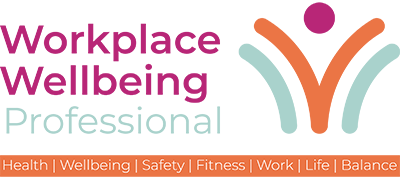Despite rising workplace dependence on data, many employees remain uneasy about working with it — and in some cases, avoid it altogether. A new study by sheds light on a growing disconnect between expectation and capability in the modern workplace, one that could be quietly costing employers both productivity and morale.
A global survey by graphic design platform Canva of more than 2,400 sales and marketing professionals reveals that while 89% of professionals now work with data or spreadsheets on a weekly basis, over a quarter (27%) actively avoid it.
In the UK, nearly eight in 10 workers (78%) admit they experience “data anxiety” — a form of workplace stress that arises when engaging with complex or dense data sets.
“Working with data shouldn’t be confined to specialists,” said Duncan Clark, head of EMEA at Canva. “When you give teams the right tools and training to turn numbers into narratives, you can unlock so much potential in an organisation.”
Data Dependence Is Growing — But Confidence Isn’t
The report, Beyond the numbers: how data storytelling redefines communication, reveals a significant workplace paradox. Although data now drives more business decisions than ever, employees are often ill-equipped to interpret or communicate it.
Three-quarters (77%) of respondents say their workplace reliance on data has increased over the past two years, while 80% are now expected to be data literate. But the tools and training to meet that expectation appear lacking: almost half (46%) struggle with formulas, and 42% report difficulty interpreting complex spreadsheets.
A majority (74%) want to improve their effectiveness with data, but current training efforts may not be hitting the mark. Despite 44% of UK organisations offering data literacy training, most workers still lack confidence once faced with real-world data tasks.
The High Cost of ‘Data Dread’
The productivity impact of these shortfalls is not hypothetical. When professionals shy away from data, experts say it leads to missed insights, errors in reporting and underwhelming performance measurement.
In customer-facing teams like sales and marketing, the gap can directly affect how effectively campaigns are evaluated and how persuasively results are communicated to clients and stakeholders.
While 82% of professionals say they are confident working with data in theory, only 42% maintain that confidence once they start working on data-heavy tasks, indicating a steep drop in comfort once theory meets practice.
For employers, that represents a potential chasm between workforce ambition and output.
Visual Communication Boosts Confidence
One of the more hopeful findings in the Canva report is that confidence rises significantly when workers are allowed to present data visually. Eighty-two percent say they feel more confident using data when it is visualised, and 89% agree that visualisations help boost their credibility.
For leaders, this insight points to a powerful opportunity: building employee capability not just through technical data training, but also by equipping teams with intuitive visualisation tools.
“Data alone doesn’t move people, but stories do, so that’s what we should focus on,” said Clark.
Can AI Help Close the Gap?
The rise of artificial intelligence (AI) offers potential to ease data anxiety, with 75% of professionals believing the technology can improve their ability to work with data by automating tedious tasks and suggesting effective data visualisations.
But the report also urges caution. Concerns persist around AI’s trustworthiness, accuracy and impact on creativity. These, say observers, are issues employers will need to navigate carefully as they consider how best to support their teams.
Nearly half (47%) say they struggle switching between different data tools, reinforcing the idea that more accessible and user-friendly solutions are needed to remove friction in the workflow.
A Strategic Opportunity for Employers
The study offers a reminder that data competence is no longer a niche skill but a core capability for modern teams. The ability to interpret, communicate and build narratives around data is now essential to workplace effectiveness, not just in analytics roles but across marketing, sales and operations.
Workplace wellbeing professionals may wish to pay particular attention to the hidden stressors data can bring. When workers feel out of their depth, confidence and performance can dip, creating a cycle that ultimately affects morale.
“The goal isn’t to make everyone a data scientist, but to empower teams to confidently make sense of the data at their disposal and turn it into compelling, engaging stories, whether it’s for internal presentations or external content,” said Clark.


